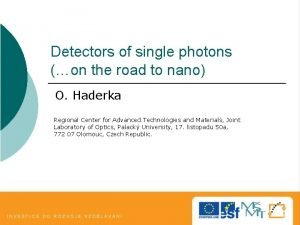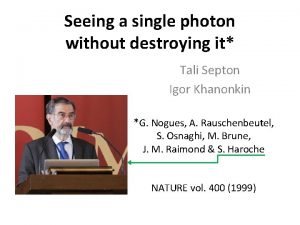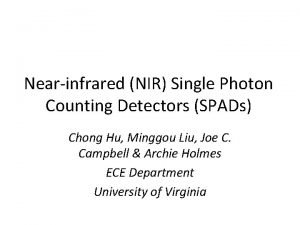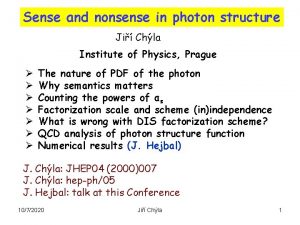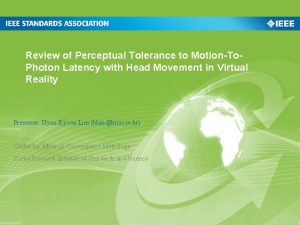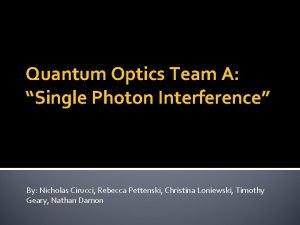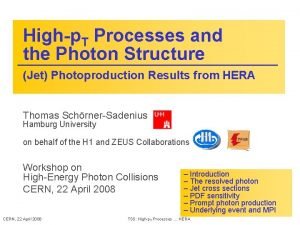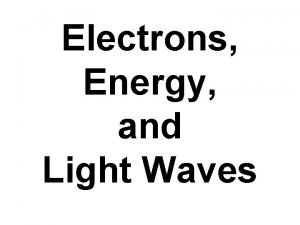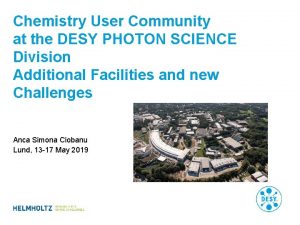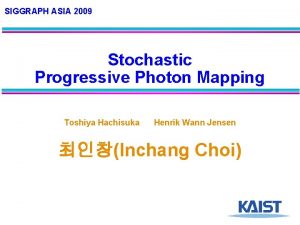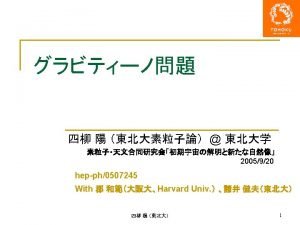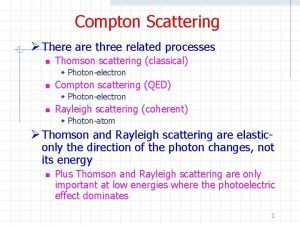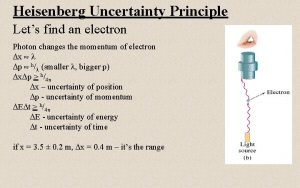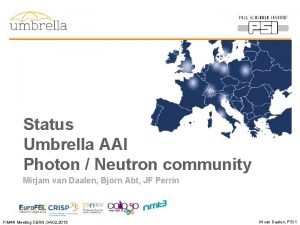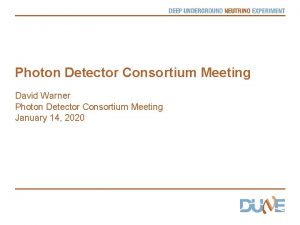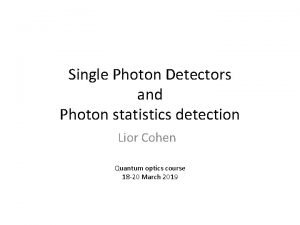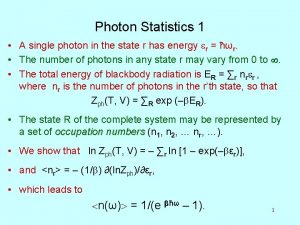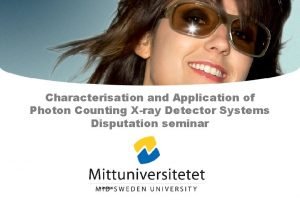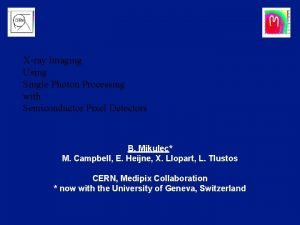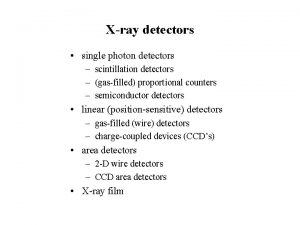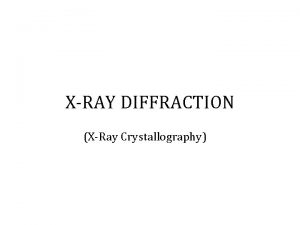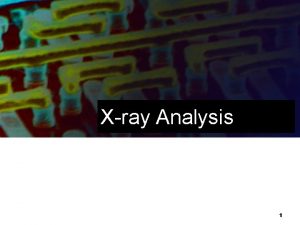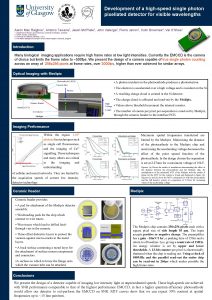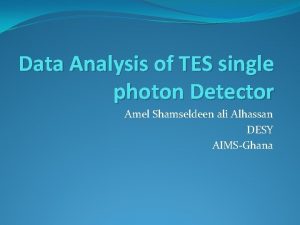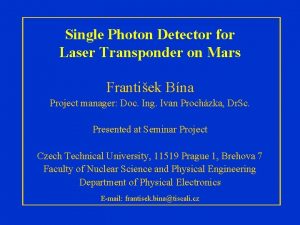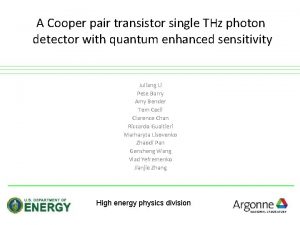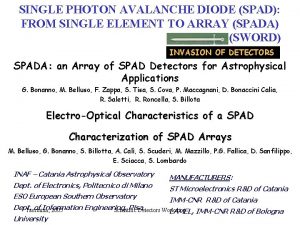Study of HfSTJ for single Xray photon detector


![Neutrino Decay signal and backgrounds Surface Brightness I [MJy/sr] CIB summary from Matsuura et Neutrino Decay signal and backgrounds Surface Brightness I [MJy/sr] CIB summary from Matsuura et](https://slidetodoc.com/presentation_image_h2/2bfda0008d66a3a67a730c3563c55ea0/image-3.jpg)


![STJ candidates Si Nb Tc[K] 9. 23 Nb/Al-STJ Δ[me. V] 1100 1. 550 • STJ candidates Si Nb Tc[K] 9. 23 Nb/Al-STJ Δ[me. V] 1100 1. 550 •](https://slidetodoc.com/presentation_image_h2/2bfda0008d66a3a67a730c3563c55ea0/image-6.jpg)












- Slides: 18

Study of Hf-STJ for single X-ray photon detector 2021/3/29 DPPD session, TCHo. U workshop (online) Y. Takeuchi for the COBAND collaboration

COBAND(Cosmic Background Neutrino Decay) Search for Neutrino decay in Cosmic background neutrino To be observed as FIR photons around ~50 m Neutrino Decay
![Neutrino Decay signal and backgrounds Surface Brightness I MJysr CIB summary from Matsuura et Neutrino Decay signal and backgrounds Surface Brightness I [MJy/sr] CIB summary from Matsuura et](https://slidetodoc.com/presentation_image_h2/2bfda0008d66a3a67a730c3563c55ea0/image-3.jpg)
Neutrino Decay signal and backgrounds Surface Brightness I [MJy/sr] CIB summary from Matsuura et al. (2011) ZE AKARI CMB COBE Expected Neutrino Decay signal ZL ISD DGL C B Zodiacal Emission dec ay SL Wavelength [ m] Current experimental lower limit is 1012 yrs E [me. V] We can identify decay signal by highly precise measurement of photon energy spectrum around ~50 m Require for the detector to detect and measure single photon energy at ~50 m

Superconducting Tunnel Junction (STJ) Detector Superconductor / Insulator /Superconductor (SIS) Josephson junction device E 2 Superconductor 300 nm Insulator Ns(E) 100 m Superconductor Insulator Δ: Superconducting gap energy • Much lower gap energy (Δ) than FIR photon Can detect FIR photon and measure its energy.

E Current STJ current-voltage characteristics W/ light illumination No light -2 /e leak current Voltage DC Josephson current Suppressed by B field
![STJ candidates Si Nb TcK 9 23 NbAlSTJ Δme V 1100 1 550 STJ candidates Si Nb Tc[K] 9. 23 Nb/Al-STJ Δ[me. V] 1100 1. 550 •](https://slidetodoc.com/presentation_image_h2/2bfda0008d66a3a67a730c3563c55ea0/image-6.jpg)
STJ candidates Si Nb Tc[K] 9. 23 Nb/Al-STJ Δ[me. V] 1100 1. 550 • Well-established and commonly used. • Δ~0. 6 me. V by the proximity effect from Al • Operation temp. <400 m. K • Back-tunnelling gain G ~10 • Nq. p. =25 me. V/1. 7Δ 10~ 250 E/E~10% for E=25 me. V single-photon detection is feasible ideally. Candidate for the rocket experiments with diffraction grating. Hf-STJ • Not established as a practical photo-detector yet by any group • Nq. p. =25 me. V/1. 7Δ~ 735 • 2% energy resolution for a 25 me. V single-photon is achievable Spectrum measurement without a diffraction grating. Developing for a future satellite experiment Al Hf 1. 20 0. 165 0. 172 0. 020

Superconducting device process equipment at KEK clean room Hf-STJ samples are fabricated at KEK clean room by our group. • Successful in etching Hf layer in 2008. • Confirm SIS junction by Hf-Hf. Ox-Hf in 2010. • Confirm Hf-STJ response to visible DC light in 2013. ICP-RIE Aligner in yellow hat

X-ray illumination test at IBS CUP in Jun. 2019 n n n Adiabatic Demagnetization Refrigeration (ADR) at temperature down to 30 m. K Hf-STJ I-V Hf-STJ response to X(55 Fe)

X-ray illumination test at IBS CUP in Jun. 2019 On ADR cold stage n STJ samples n Cu collimator n X-ray source (55 Fe) sealed in polyester tape n Solenoid coil with persistent current switch X-ray source STJ Cu Collimator 200 m× 200 m (250 nm) (~1 nm) 25 mm (400 nm)

Setup for I-V curve and X-ray response measurements at the IBS CUP I constant current n n Sinusoidal current on STJ for I-V measurement Constant current on STJ for X-ray response measurement Voltage of STJ is read with differential amp. at room temp. X-ray signal is shown up as a negative pulse in STJ voltage. V STJ I-V curve w/ light w/o light

I-V curve about 30 m. K 200 m square Hf-STJ @ T~ 30 m. K • DC Josephson current is shown up without magnetic field • Leak current of 2 A(@20 V) at T=31 m. K Magnet Off Magnet On zoom Ileak=2 A@20 V

Signal waveform template Apply I=1 A (corresponding to V~ 9. 2 V) on Hf-STJ @ T~ 32 m. K • Set trigger at -1. 1 V for falling pulse in AC coupled readout • Get 1390 events in ~ 2 hours • Obtain the signal template from these events. Normalized so that the peak is at -1 V Trigger time since the first event(sec)

Signal fit to the template Use the region from -50 s to 200 s in the template • Amplitude and baseline are fitting parameters. • Also scan t from -50 s to +50 s, and choose the t which gives the best 2

Energy distribution After selection on 2 and baseline fit parameter for candidates, 1123 events left. • K 1+K 2 X-rays with energy of 5. 9 ke. V and a probability about 24. 4%, • K X-rays with nominal energy of 6. 5 ke. V and a probability about 2. 85% Assuming K : K ratio and peak energies and same for K and K , We fit the distribution and scaled. We found the energy resolution is 6. 7% (398 e. V) ~ 6. 7%(398 e. V)

Pedestal distribution We estimate pedestal distribution by forging pedestal waveforms from triggered events themselves. • Once fit nominal waveform to signal template, and get fit parameters ( amplitude, baseline, t) • Use amplitude and t (not baseline), subtract signal component from waveform. • After subtraction, fit again to the signal template. Subtracted signal component and fit again

Mean and r. m. s. in each time bin after subtraction for the subtraction methodology check Mean r. m. s. Signal component subtraction seems to work fine to mimic pedestal events.

Subtraction events fit to signal template ~ 6. 1%(360 e. V) • Sigma of measured energy distribution for pedestal samples forged from subtraction events is found to be 6. 1% (360 e. V), which is almost comparable to sigma of signal events.

Summary • Hf-STJ is under development for application to COBAND project, aiming at farinfrared single photon detector and spectrometer. • We successfully fabricated Hf-STJs with confirmed SIS junction and tested them with X-ray source. • We confirmed the clear signals for X-ray single photon from 55 Fe with a Hf-STJ sample and found that energy resolution is about 6. 7% for 5. 9 ke. V. These are the world first results for Hf-STJ. • Currently the energy resolution is dominated by pedestal noise. This could be due to the large leak current in Hf-STJ, as well as readout electronics noise.
 Photons
Photons Single photon
Single photon Single photon
Single photon Photon structure
Photon structure Motion-to-photon latency
Motion-to-photon latency Momentum and frequency
Momentum and frequency Jim al khalili
Jim al khalili Photon is our business
Photon is our business Photon structure
Photon structure Energy planck's constant
Energy planck's constant Electron vs photon
Electron vs photon Photon assay
Photon assay Desy photon science
Desy photon science Stochastic progressive photon mapping
Stochastic progressive photon mapping Lepton-photon
Lepton-photon Photon cross section
Photon cross section Photon uncertainty principle
Photon uncertainty principle Photon neutron
Photon neutron Mirjam van daalen
Mirjam van daalen
